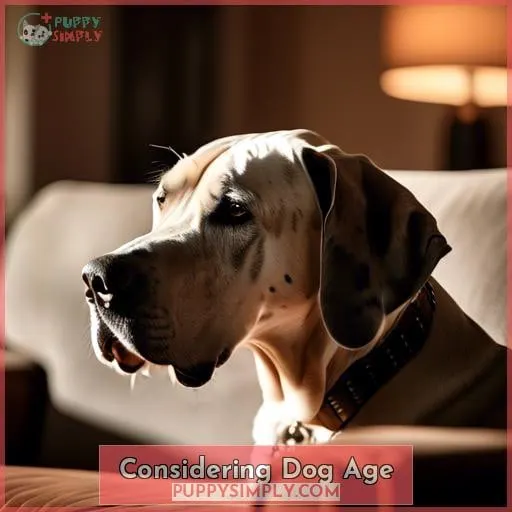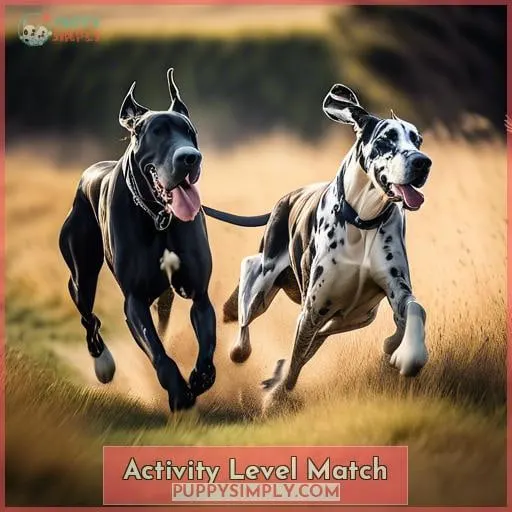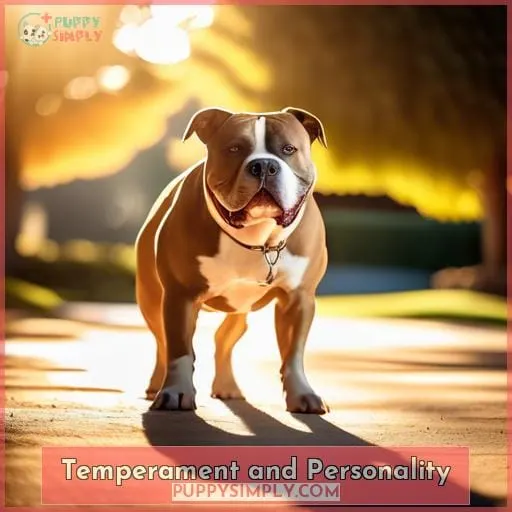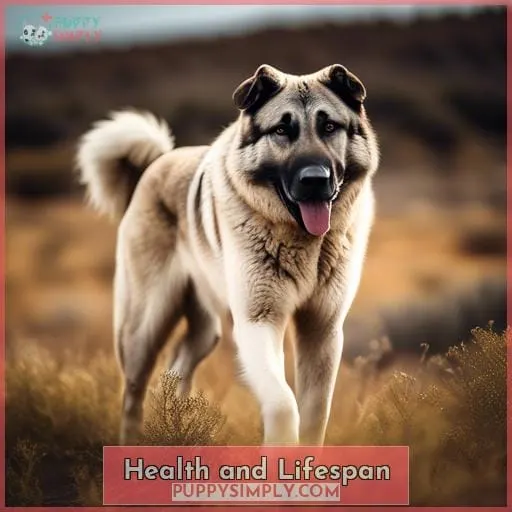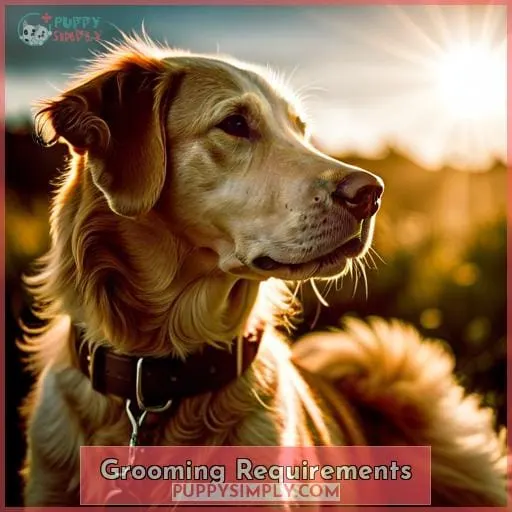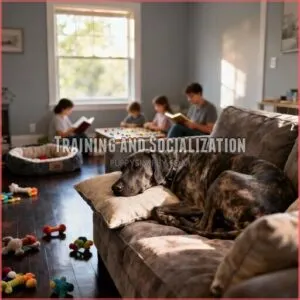This site is supported by our readers. We may earn a commission, at no cost to you, if you purchase through links.
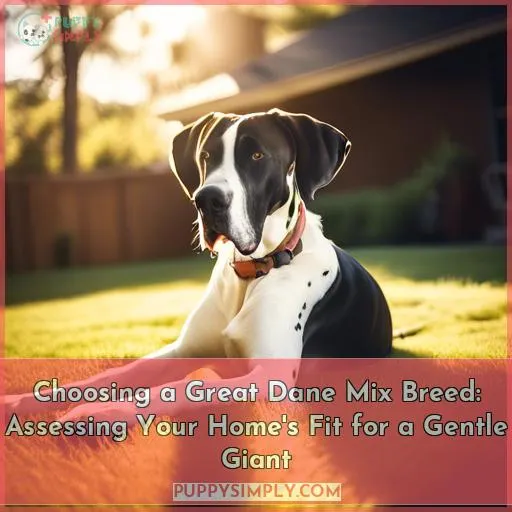
Just make sure a Great Dane mix is a good fit before bringing one home.
Do you have the space they need?
Are they a match for your lifestyle and activity level?
And what about their health and temperament?
Weigh the options carefully – this is a big commitment!
But with the right prep, you’ll gain a loving companion.
Let’s find your perfect pup!
Table Of Contents
- Key Takeaways
- Assessing Your Space
- Understanding Great Dane Mixes
- Considering Dog Age
- Activity Level Match
- Temperament and Personality
- Health and Lifespan
- Grooming Requirements
- Training and Socialization
- Adoption Options
- Preparing Your Home
- Frequently Asked Questions (FAQs)
- What are the unique challenges of owning a Great Dane mix compared to other breeds?
- How can I ensure that my Great Dane mix will be a good fit for my family, especially if we have young children or other pets?
- What are some common health concerns specific to Great Dane mixes, and how can I prevent or manage them?
- How much exercise does a Great Dane mix typically need each day, and what activities are best suited for this breed?
- What are the most effective training methods for Great Dane mixes, and how can I address common behavioral issues like excessive barking or chewing?
Key Takeaways
- Consider space requirements for a giant breed, including indoor and outdoor areas.
- Research common Great Dane mixes and their unique traits, including size, energy levels, and temperament.
- Assess your home’s suitability based on the dog’s age, lifestyle, and activity level.
- Ensure your lifestyle aligns with the exercise, temperament, and space needs of a Great Dane mix.
Assessing Your Space
When considering a Great Dane mix, you’ll need to take a close look at both your home’s interior space as well as your outdoor yard area.
Being gentle giants, these large breeds need ample room to move comfortably indoors and a securely fenced backyard to accommodate their substantial size and daily exercise requirements.
Ensure you can provide sufficient space inside and out before committing to one of these loving but substantial canine companions.
Home and Yard Size
When sizing up whether your home can accommodate a Great Dane mix, you’ll need to take stock of both your indoor and outdoor spaces.
Assess if you have enough physical space inside for a giant breed to move around comfortably and rest.
Carefully evaluate your outdoor area as well – your yard should be fenced and roomy enough for daily exercise and play.
Prioritizing sufficient home size and yard space will ensure your gentle giant thrives in its new accommodations.
Accommodating a Giant Breed
You’ll also want to consider whether you can accommodate a giant breed’s larger size and needs when assessing your space:
- Extra room for sleeping, playing, and relaxing.
- Ability to handle larger messes.
- Access to a securely fenced outdoor area.
Understanding Great Dane Mixes
When considering a Great Dane mix, it’s important to understand their most common mix breeds and the unique traits they can inherit.
Crosses like Daniffs (Dane + Mastiff), Labradanes (Dane + Lab), and Grey Danes (Dane + Greyhound) each have distinct qualities to consider regarding size, energy, coat care, and more before choosing one.
Getting knowledgeable about typical Great Dane crosses will help you find the right gentle giant mix to suit your home.
Common Mix Breeds
You’ll come across some of the most popular Great Dane mixes when exploring adoption options, including Labrador Retriever, German Shepherd, and Greyhound crosses that blend the gentle giant breed’s affectionate personality with other desirable canine traits.
When considering a Great Dane mix, it’s important to research both parent breeds to understand the unique hybrid traits you may get in terms of size, energy level, health tendencies, and more.
An ethical breeder or rescue will provide insight into the dog’s expected adult size, temperament, and care needs to ensure a good match.
Unique Traits
Your Great Dane mix’s singular qualities result from the blending of physical and behavioral characteristics from two different breeds.
Assessing the size, exercise needs, grooming requirements, and health considerations of both parent breeds will provide insights on your hybrid companion.
Weigh your lifestyle and home environment against the unique traits of your gentle giant to ensure your perfect temperament match.
Responsible dog breeders emphasize matching mixed-breed pups with compatible, prepared owners.
Considering Dog Age
Assessing Your Home’s Fit for a Gentle Giant:
When choosing a Great Dane mix breed, consider the dog’s age and what stage of life might best suit your lifestyle.
Rambunctious puppy energy can be a lot to handle. If you have a quieter household, an adult or senior dog may be preferable.
More mature dogs still need exercise and attention but tend to have lower activity levels that pair well with families out at work or school during the day.
Senior dogs can make for especially laidback companions.
Consider Puppy Energy Levels
The exuberance of a Great Dane puppy necessitates that you realistically assess whether your home can accommodate their high activity level.
Great Dane puppies require ample playtime and training to properly manage their energy.
Assessing your ability to meet their needs for exercise, training, and integration into family life is crucial before making the long-term commitment of adding one of these gentle giants to your home.
Match Dog Ages With Family
When lining up adults versus puppies, you’ll want to synchronize with yourself if younger children persist at residence.
Consider matching energy levels and daily schedules when adopting a Great Dane mix into your family.
Rambunctious puppies pair better in homes with older kids and adults who can meet their needs, while senior dogs offer lower key companionship for families with young children or less active lifestyles.
Evaluate age-appropriate dynamics to integrate the ideal gentle giant companion for your home life flow.
Senior Dogs Offer Companionship
By adopting an older Great Dane mix, you’re gaining:
- A mellow companion
- Less demanding exercise needs
Senior dogs offer delightful companionship through their:
- Gentle, affectionate natures
- Years of life experience
Their:
- Lower activity levels
- Minimal care requirements
Let senior canine friends focus on sharing:
- Profound bonds
- Sage affection
With new families.
Activity Level Match
You’ll need to carefully consider whether a Great Dane mix is a good match for your lifestyle in terms of activity needs.
These gentle giants require substantial daily exercise but spend much of their time relaxing at home as well.
Ensure you can meet the exercise requirements before bringing one of these lovable dogs into your household.
Exercise Needs
You’ll need to seriously consider whether you can meet a Great Dane mix’s exercise requirements before bringing one home.
As large, energetic dogs bred to hunt, they require vigorous daily exercise such as long walks, jogs, or hikes, plus indoor play and enrichment.
An ideal home will provide both outdoor exercise and indoor activities to meet their needs for physical and mental stimulation.
Interactive toys and games are great for maintaining playtime balance.
Your Lifestyle
You’d be tying yourself to quite a commitment if you bring home a Great Dane mix.
Properly assess if their activity requirements sync up with your habits and way of life.
Great Danes require at least 30-60 minutes of exercise per day.
Ensure you can meet this need with regular walks, play time, or access to a securely fenced yard.
An inactive home would bore this energetic breed, potentially causing destructive behaviors.
Consider if your daily routine accommodates sufficient outdoor time before deciding on a Great Dane mix.
Temperament and Personality
When considering a Great Dane mix for your home, think about both the breed’s gentle and loving nature, as well as how they’ll interact with other pets and family members.
Patience and kindness are key in training and socializing your Great Dane mix to ensure a harmonious household.
Family Compatibility
When considering a Great Dane mix, you’ll want to think about your family’s lifestyle and whether the dog’s temperament and personality will be a good fit.
Great Dane mixes tend to be friendly and gentle, making them great companions for families with children.
However, they can also be quite energetic, so it’s important to make sure your family has the time and space to give them the exercise they need.
Interaction With Other Pets
Touching on their temperament and personality, you’ll want to consider how a Great Dane mix will interact with other pets in your household.
- Socialize the dog early.
- Properly introduce to current pets.
- Supervise play sessions until hierarchy and boundaries are established.
- Ensure your home has space for multiple large breed dogs.
Health and Lifespan
You’ll want to be aware of some common health issues seen in Great Danes and Great Dane mixes.
Large and giant breeds are prone to joint problems, heart disease, and bloat, so regular veterinary care is a must.
Expect vet bills to be higher than average due to their size and potential health problems.
Common Health Issues
When considering adopting a Great Dane mix, be aware of their susceptibility to hip and elbow dysplasia, aortic stenosis, and bloat.
Discuss preventive care with your vet, including optimal nutrition and ideal exercise routines.
With proper health monitoring and training techniques, you’ll help your gentle giant live their healthiest, and most joyful life.
Veterinary Considerations
Your due diligence in selecting an experienced vet for your giant breed will help ensure their longevity.
Check their knowledge in treating large and giant breeds.
Look for one that’s experienced with the health issues of the mix.
Ensure they can accommodate a dog over 100 lbs on exam tables.
Pick one that makes you and your dog comfortable.
Grooming Requirements
When considering a Great Dane mix, you’ll need to assess the grooming requirements based on the dog’s coat type.
Expect regular brushing and more frequent bathing for short-haired breeds that shed moderately.
Long-haired mixes require diligent daily brushing to prevent matting and may need professional grooming.
Coat Types
When choosing a Great Dane mix, you’ll need to consider their coat type and grooming requirements.
Long-haired varieties like Dane-Airedale mixes require frequent brushing to prevent matting.
Minimal shedding options like Doodle crosses are great for allergy sufferers.
Other considerations include:
- Seasonal coat changes
- Skin sensitivities
- Tail pocket cleanliness for optimal health
Getting to know grooming needs upfront ensures your gentle giant’s coat stays clean, comfortable, and manageable.
Shedding and Care
How much time will you dedicate to brushing and bathing your Great Dane mix breed?
Great Danes and Dane mixes shed moderately year-round and more heavily as seasons change.
Regular brushing helps remove loose hair and prevents mats from forming in their short, smooth coats.
Baths every few months keep their coat and skin healthy.
Tending to these grooming requirements prevents shedding around your home.
- Invest in a good vacuum cleaner and keep carpets clean.
- Brush frequently with a slicker brush.
- Bathe occasionally with mild dog shampoo.
- Use deshedding tools like shedding blades.
- Keep their skin and coat healthy with good nutrition.
Training and Socialization
You’ll want to consider the behavioral expectations and social needs of a Great Dane mix breed before bringing one home.
While gentle giants, their size means thorough training and socialization is essential.
Take the time to determine if your household can provide the dedicated training required for a well-adjusted gentle giant.
Behavioral Expectations
- You’ll need to consider the training and socialization needs of a Great Dane mix when assessing compatibility with your home.
As shelter staff, we advise positive reinforcement to teach these sensitive giants.
Utilize treat rewards, patience, and firm kindness in training.
Seek a rescue organization’s advice on a dog’s cues and background before adopting.
Social Needs
You’re going to want to look into the companionship requirements for a Great Dane mix.
In accordance with proper training and thorough socialization from a young age, having playdates with neighbor dogs, attending yappy hour at the local pet store, and visiting dog parks can facilitate canine companionship.
Understanding your pup’s body language and properly socializing them early on will foster lifelong bonds with both humans and other dogs.
Adoption Options
When considering adopting a Great Dane mix, you have two main options: reputable breeders or rescue organizations.
Both can help match you with a dog that fits your home and lifestyle, but they take different approaches.
We’ll delve deeper into the key distinctions between these adoption paths so you can make the best choice for your family.
Rescue Organizations
You’d be saving a gentle giant by checking out rescue organizations if you’ve decided adoption’s the route for you.
Many wonderful rescue groups focus specifically on Danes and Dane mixes, making the adoption process smooth.
Visit their sites to read success stories, find upcoming events, volunteer, or donate.
Fostering lets you temporarily care for a dog to help the organization.
Shelters and rescues enable a second chance for the sweet pups waiting for new families.
Reputable Breeders
When seeking a Great Dane mix, reputable breeders offer a responsible route to finding a well-bred pup.
They adhere to ethical practices, ensuring breeding standards are met, health testing is conducted, and genetic diversity is maintained.
By choosing a reputable breeder, you contribute to responsible care and ensure your furry friend receives the best start in life.
Preparing Your Home
Before bringing a Great Dane mix home, you’ll want to make sure your home is safe and ready for your new gentle giant.
This means:
- Puppy-proofing your home
- Stocking up on essential supplies like food, water, and bedding
- Creating a dedicated space for your dog to relax and rest
Essential Supplies
To ensure a smooth transition, gather all the necessary supplies before bringing your Great Dane mix home:
- Sturdy crate
- Comfortable dog bed
- Food and water bowls
- Leash and collar
- Training tools
Puppy-proof your home.
Don’t forget essential items:
- Food
- Treats
- Toys
- Grooming supplies
Creating a Safe Environment
Secure your home to prevent escapes and accidents for your new Great Dane mix:
- Secure windows, doors, and gates.
- Remove dangerous items from reach, such as medications and cleaning supplies.
- Hide electrical wires and cords.
- Keep your swimming pool covered when not in use.
- Fence your yard to prevent your pet from escaping.
These safety measures are crucial for a breed prone to wandering and accidents.
Frequently Asked Questions (FAQs)
What are the unique challenges of owning a Great Dane mix compared to other breeds?
Great Dane mixes, with their towering presence, bring unique challenges:
- Potential joint issues
- Heightened risk of bloat
- A hearty appetite that strains wallets
Are you up for the task?
How can I ensure that my Great Dane mix will be a good fit for my family, especially if we have young children or other pets?
Imagine your home as a vibrant garden,
where each member is a unique flower.
A Great Dane mix, with its gentle giant nature,
can be a beautiful addition,
adding playful colors and protective shade.
To ensure harmony,
introduce them gradually,
like carefully transplanting a seedling,
respecting each member’s space and needs.
What are some common health concerns specific to Great Dane mixes, and how can I prevent or manage them?
Prevent and manage common health concerns in your Great Dane mix through:
- Regular checkups
- Genetic testing
- Proper diet
- Exercise
- Dental care
Early detection and intervention can promote a long, healthy life for your beloved companion.
How much exercise does a Great Dane mix typically need each day, and what activities are best suited for this breed?
Great Dane mixes are like perpetual toddlers,
Bursting with boundless energy.
Aim for an hour of daily exercise,
Including walks, runs, and active games.
Unleash their inner athlete!
What are the most effective training methods for Great Dane mixes, and how can I address common behavioral issues like excessive barking or chewing?
Train your Great Dane mix with positive reinforcement and consistency.
Address excessive barking by ignoring it and rewarding quiet behavior.
Deter chewing with chew toys and bitter spray.



